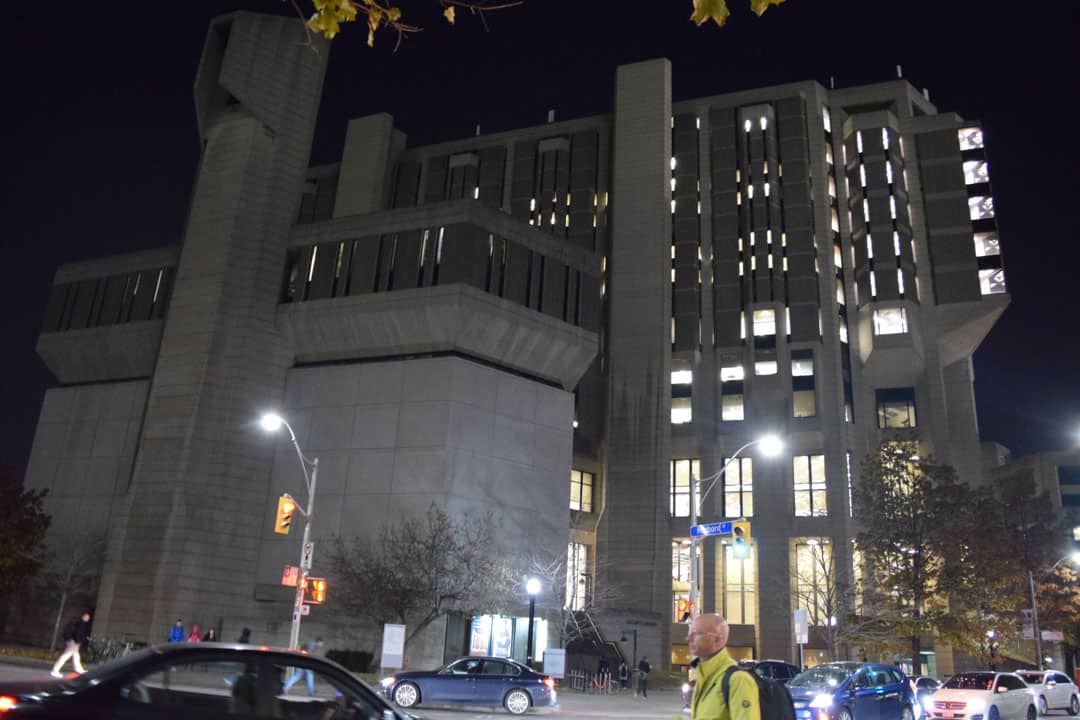Ever since joining the Faculty of Law in 2015, I have noticed one shortcoming at UTSG: insufficient access to library space during exam season. I am not referring to difficulties finding a space in one of our many libraries during peak hours — this is an unavoidable part of student life — but to finding a space when the lights in most of those libraries have gone down.
At Queen’s University, where I completed my Bachelor of Arts, there is no such problem. Queen’s students can avail themselves of the entire space offered by Joseph S. Stauffer Library, the school’s main library, at any time of the day or night during the exam period. While services like the circulation desk and amenities like the café close for the night, every floor of the library remains open and accessible to students. Though some at Queen’s have criticized this policy, largely because they contend it increases anxiety among students, I argued that this isn’t true in a piece for the The Queen’s Journal.
I firmly believe that Robarts Library, our Stauffer equivalent, ought to offer 24/7 opening hours for the entire building during exams. My focus is on Robarts because it is both the largest library on campus and the only one currently offering 24-hour access, which makes it a logical and more modest starting point for the modification of opening hours. What does remain open during the exam period is woefully inadequate for students seeking any study space, let alone a place for concentrated reading and immersive studying.
Currently, only the first three floors of Robarts stay open to students through the night, and those are mostly comprised of common space. Anyone using the study rooms and spaces on the upper floors of Robarts during exam time must leave the library or relocate to these floors at 11:00 pm. There is only a single formal Reading Room on the second floor, and students trying to relocate from the upper floors are, by that time, likely to find this room scant of space. It would strain credulity to suggest that this offering is proportionate to the more than 60,000 undergraduate and graduate students enrolled at the St. George campus.
There are four reasons to support more expansive opening hours during exams.
First, a 24/7 policy that grants students access to the entire library is the only way to accommodate the diverse study habits and sleep patterns of students. Conventional morning-to-midnight hours assume every studying student thrives during this time period, but it would be unreasonable to assume this is true: some of us do our best work after dark, and some are surely capable of the same in the very early morning hours. A university with the size and wealth of resources that U of T boasts should do everything it can to foster the success of all of its students.
Second, extended hours will have a knock-on benefit to those students who are perfectly happy with the conventional morning-to-midnight hours. If students who prefer to work late nights and early mornings know that they have this option, they might reasonably choose not to vie for a coveted spot in the library during peak hours. Extending hours in Robarts might thereby alleviate some of the daytime congestion in our libraries during the exam period.
Third, a more expansive opening policy could have a beneficial effect on the mental health of students. There are few things less desirable for a student beset by exams and deadlines than having a good, productive flow of study disrupted. And every student has likely experienced a moment of despondency upon discovering that the time they budgeted for a certain assignment or topic of study is insufficient. There is no reason to exacerbate that fretting by forcing students to race against the clock as well. Students would gain peace of mind knowing that they are free to stay in their spot at the library until the work they set out to do is finished.
Finally, all the benefits mentioned outweigh what I understand to be the costs of amending the current opening hours. I reached out to several university libraries across Canada, and 12 were kind enough to respond. Those that were able to return estimates of the costs associated with their extended hours noted that those costs were primarily associated with security. The respondent universities pegged these costs in the tens-of-thousands range. Our school is the largest in Canada, meaning the costs of this change may surpass those incurred at other schools. That said, those costs are likely to be manageable relative to our larger enrolment numbers and annual operating budget of what is proposed to total $2.47 billion for the 2017–2018 fiscal year.
I am by no means intimating that we spend more money to keep library services like circulation perpetually available, or that harried librarians should be burning the midnight oil. That would likely be disproportionately expensive and, in any event, none of the schools I surveyed offer a full panoply of library services throughout their extended hours. U of T could employ the same approach as these schools: regular hours for full-time library staff supplemented by security guards to check IDs and patrol the stacks through the night.
None of this is meant to denigrate our school’s library services. My informal survey of other university libraries revealed that, while U of T may not be the best in this department, it is among the more generous. But the school need not be complacent — it can be better. U of T is a preeminent university whose students are passionate about the work that they do here. Giving us greater access to Robarts during exam time would be conducive to the success upon which U of T prides itself.
Nick Papageorge is a third-year student in the Faculty of Law.


